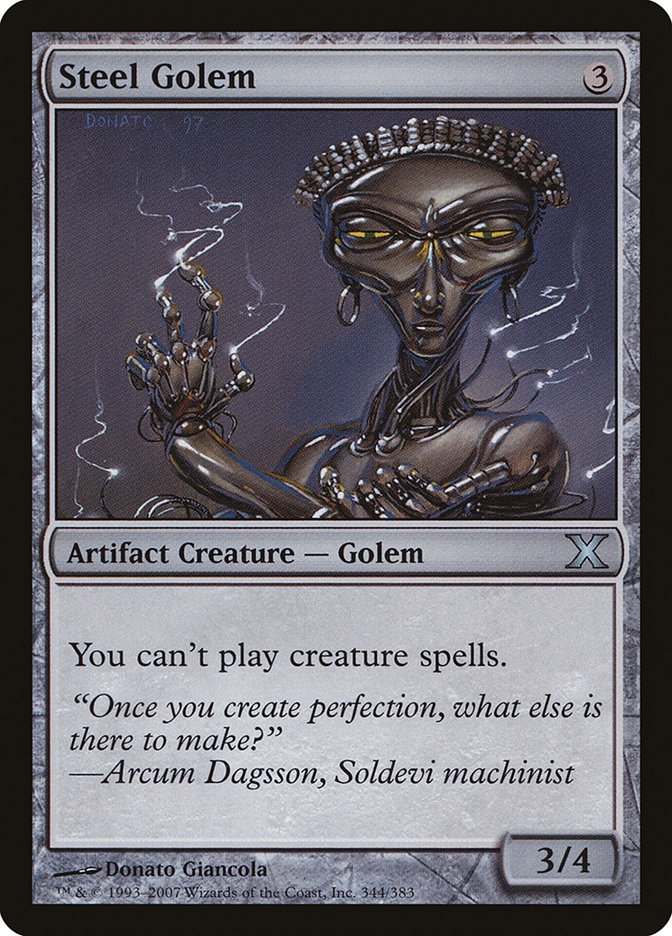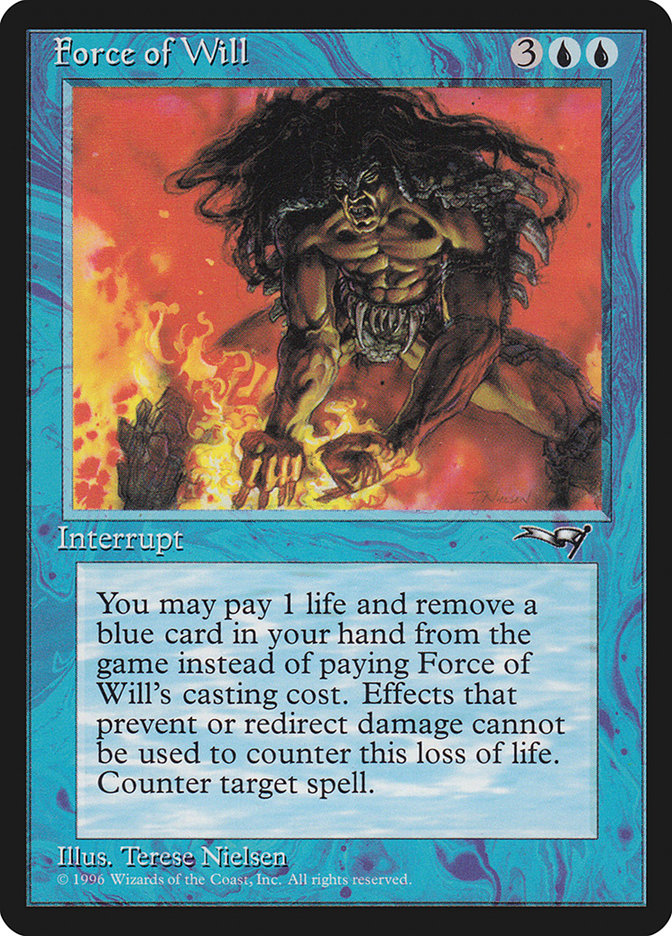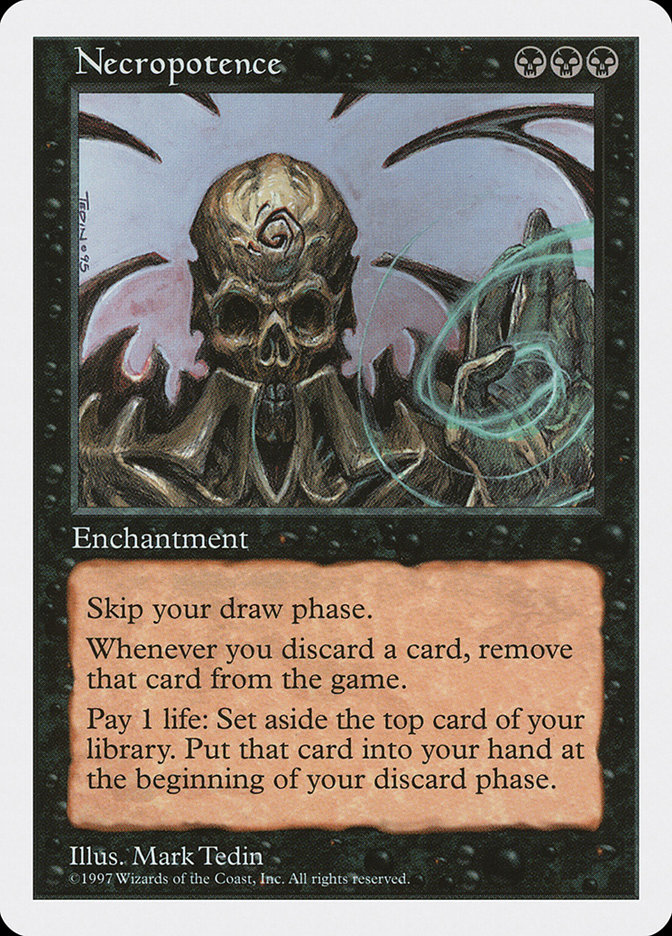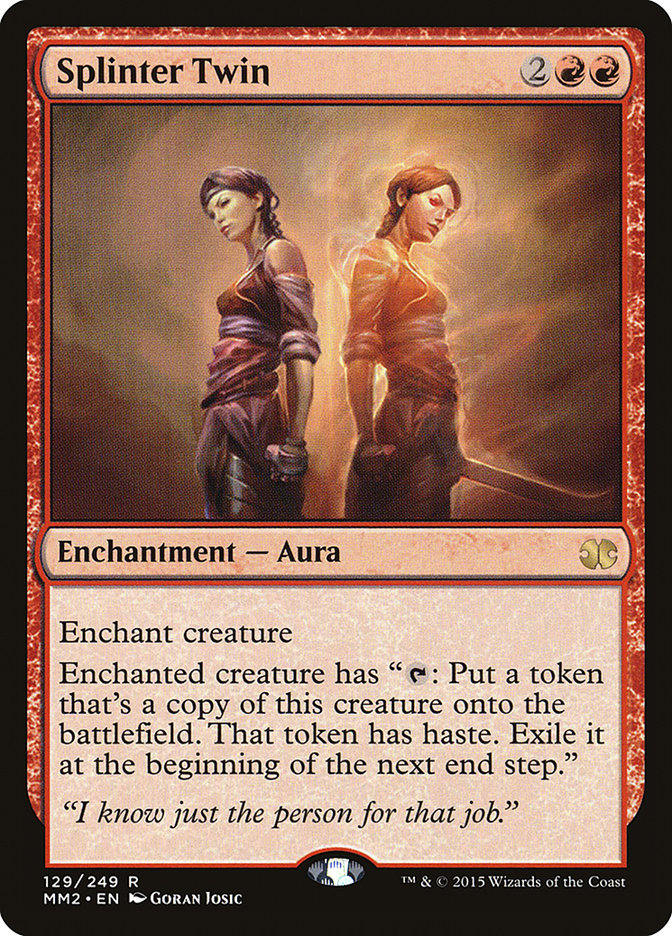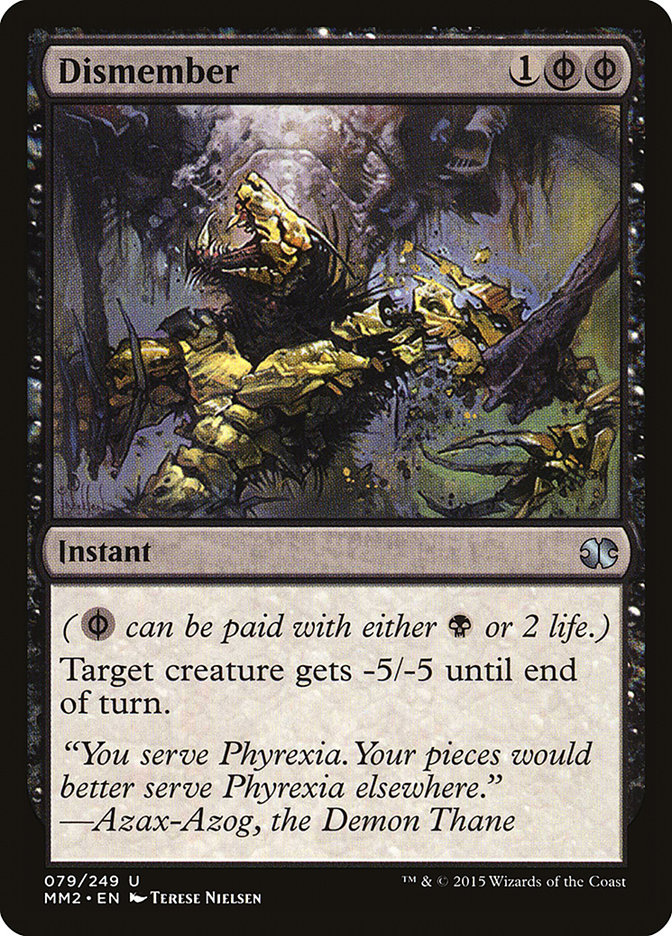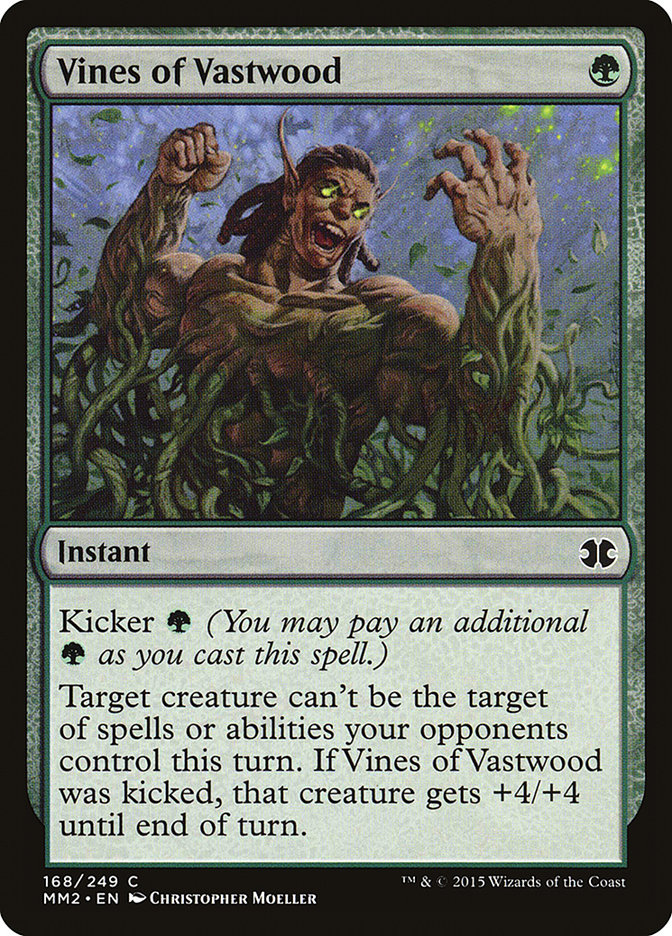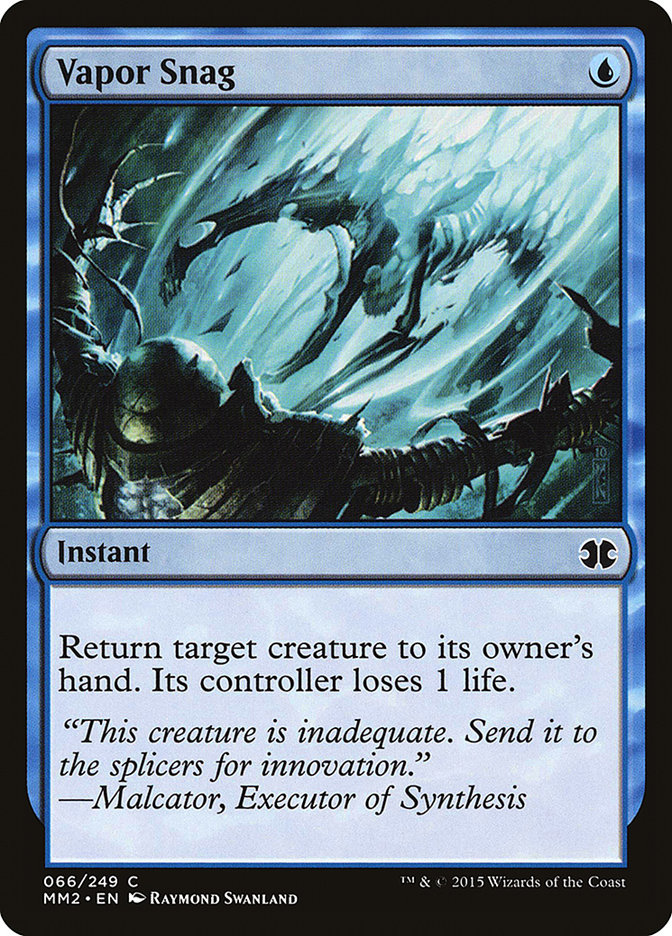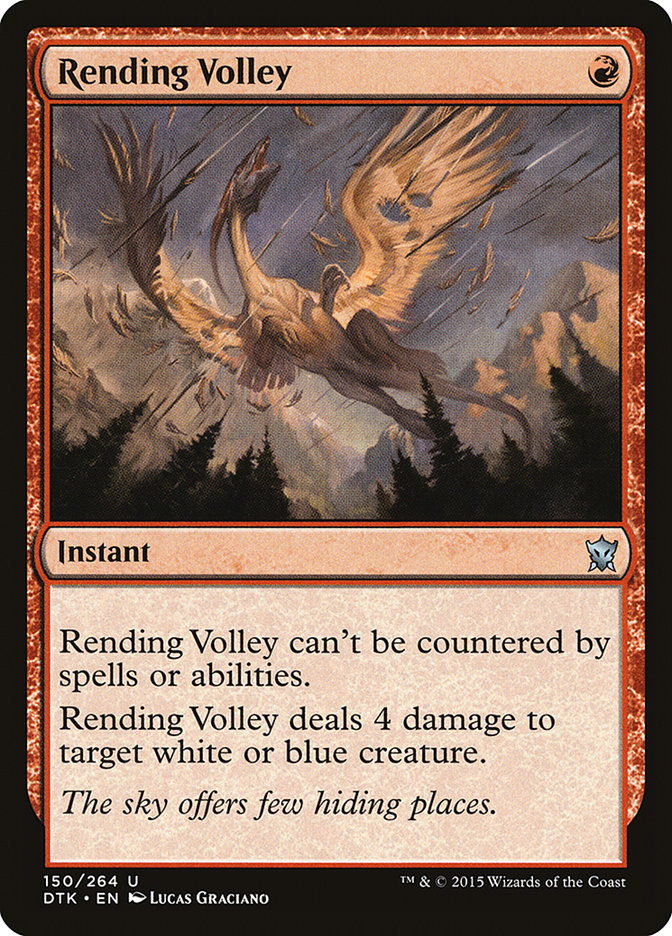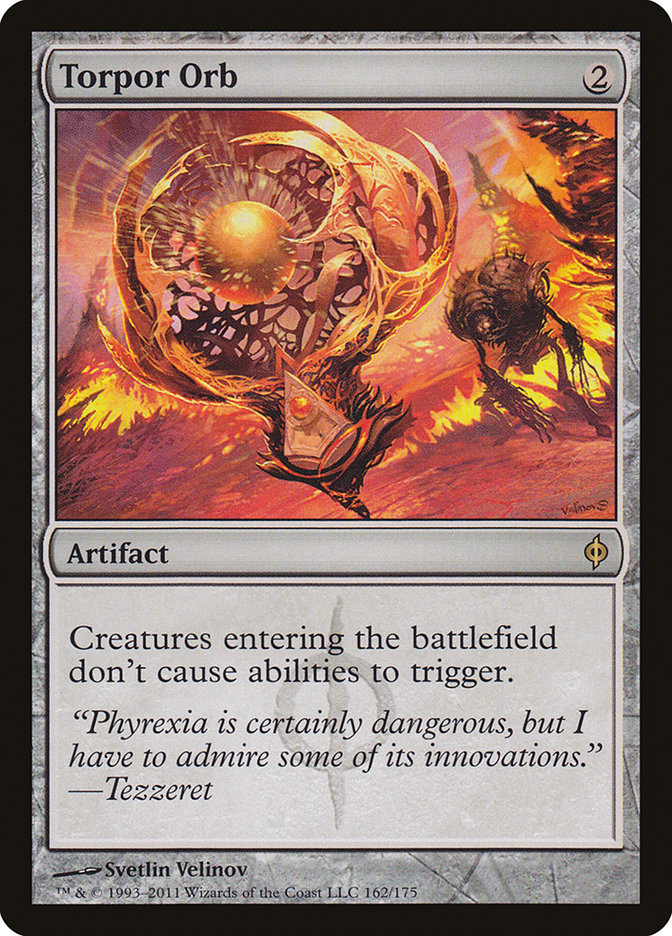“Nothing was being forced out of the format! Wizards is ruining Magic!”
Now, I have a lot of sympathy for what is often thought of by many as “Magic Whining”. In the early dawn of the game, one of my friends and Magic compatriots was Jamie Wakefield. Jamie was a legend of the game in many ways, and not just because he pioneered Natural Order as a real Magic card. No, Jamie was a legend because he pioneered midrange decks.
One of the consequences of being a man who was interested in casting these spells…
… when these spells were legal…
… is that you often end up being vocal about your complaints about how things feel from a balance perspective. Jamie was exactly that. One of his early complaints was simple: “Wizards hates green!”
A big part of his complaint stemmed from the simple fact that the best green cards of the era tended to be cards that were not only usable by any deck, because of the ways that cards like City of Brass and painlands were a rampant part of Constructed Magic, but also that the good green cards tended to be better in decks that weren’t primarily green. Whether it was Ehrnam Djinn or Call of the Herd, this was generally the case, and it drove him nuts.
Now, I never really cared as much as Jamie about this, but I generally agreed that green wasn’t fully getting a fair shake. I wasn’t as concerned about this as Jamie because I didn’t think it was as bad as he thought, and ultimately I didn’t mind playing several colors, especially red or blue. Blue, of course, was the favored child of Wizards (and perhaps still is), but this drove him nuts.
I’m used to complaints, certainly. But, the complaints about the bannings aren’t ones I have much sympathy for. Most people seem fine with the ‘Bloom’ part of Amulet Bloom getting a knock on the head, but there has been some pushback about the Splinter Twin banning.
One of the complaints I’ve heard is that of cost – that there is a cost associated with the lost investment of getting involved in a deck. Candidly, Magic is not chess, and cost comes into the equation no matter what might or might not be banned. New cards get printed all the time, and a new card can arrive that completely makes another deck wildly unplayable. A banning might explicitly get rid of a deck, but the implicit destruction of decks happens all the time, so “the cost of making a new deck” just isn’t compelling to me.
The other major attempt to give a reasonable criticism to the Splinter Twin banning is one that I’ve seen online, though I haven’t yet heard made in person. That claim is at the top of this article and its simple: Modern has been very diverse this whole time that Twin existed, so nothing has been forced out of the format by Twin.
That, my friends, is hogwash.
On my Magic Online account, I have 24 active decks I am using in Modern. These are real decks, and I’ve put work into them.
The number of them that I consider viable in the pre-banning world is maybe two or three.
What keeps them from being viable?
Well, there are a variety of factors that have been holding them back. In some cases, it literally was Amulet Bloom, and Amulet Bloom alone. But Twin itself was a huge reason that the deck would struggle.
For each and every one of the decks that was dedicated to trying to be aggressive, Twin demanded special attention. If it wasn’t Path to Exile, it was Dismember or Galvanic Blast. You absolutely needed to be able to be certain that you simply wouldn’t die to Deceiver Exarch stopping your attempt to kill them, followed by their own win. In addition, though, if you weren’t hitting that perfect aggressive kill, you could just as easily fall to the Exarch tapping your open land, demanding you preemptively lose your answer, or risk death.
Bolt wasn’t enough, nor, really, was any non-dedicated creature removal spell. If you were an aggressive deck, you often didn’t want to mess around with a card that wasn’t involved with killing the opponent, but you couldn’t afford not to go off plan either, because the cost was essentially just losing.
You were forced to “suck it up” and play the card that really wasn’t on plan because you had to. Why did Affinity sometimes end up including main deck Spellskite? It wasn’t because it helped the beatdown, per se, even if it could attack. Some builds were especially geared towards Twin-antagonism:
Creatures (28)
- 4 Arcbound Ravager
- 4 Ornithopter
- 1 Master of Etherium
- 3 Steel Overseer
- 2 Memnite
- 3 Etched Champion
- 4 Signal Pest
- 2 Spellskite
- 4 Vault Skirge
- 1 Hangarback Walker
Lands (16)
Spells (16)
Sideboard

Affinity is probably the most successful truly aggressive deck that existed in the Twin universe, but that is, in large part, because Galvanic Blast can be a weapon the deck can use, Spellskite is a reasonable card to bring to the mix in the 75, and, most importantly, the deck is simply fast enough that it can hope to just ignore what another deck is doing, whether it is a Twin deck or not.
One other aggressive decks that actually could do something about Twin without going off plan were Infect and Merfolk, and that was largely on the back of these cards:
The oft-forgot “target creature” text of Vines of Vastwood is an excellent way to stymie Splinter Twin while still being a card that can be part of an active plan to kill the opponent for Infect. The same holds true for Merfolk, for similar reasons.
Amusingly, for both of those decks, as well as for basically every deck that would try to attack for victory, the existence of Twin demanded that people play not just removal spells, but potent removal spells that would end up being a pain for every single aggressive deck.
I don’t know how many of the aggressive decks I’ve been working on for the past few years are suddenly reasonable again, but my instincts tell me that it is more than a few.
Sideboarding also just became a bit less troublesome. In a world where singularly focused decks are so powerful, having not one but two less decks that you need to so aggressively sideboard against is a huge deal.
These were the two most common cards that were basically there overwhelmingly for the Twin matchup, even if, like Spellskite, they had other applications. This extra room can mean that decks can actually have enough space to be able to have answers for far more problems. Reactive decks, whether they are Rock-like decks like Jund and Abzan or other blue-based decks like Grixis and Jeskai, all win because of this. Speaking of those decks…
There is a whole other part of the spectrum that also gets affected, though. These are basically all of the blue/red decks, whether they are strictly blue/red, blue/red/white, blue/red/black, or blue/red/green. All of these decks typically just ended up with the word “-Twin” at the end of their name, because, well, that was one of the best ways to do blue/red(/x).
Creatures (12)
Lands (23)
Spells (25)

If you take Andrew Tenjum’s Classic deck from Las Vegas and take out the ten dedicated Twin cards, you have the core of a powerful deck. One of the problems for the non-Twin versions of these decks, though, is that as a deck dedicated to a grind, it is simply less good than a deck that can threaten a kill if your opponent lets their guard down.
The SCG Tour® events in Cincinnati and then in Charlotte really showcase this, with the “-Twin” suffix knocking out any attempt to be Grixis Control or anything of the sort. In the Top 16 of both events, every deck with four Snapcaster Mages and four Lightning Bolts also had four Splinter Twins.
Now, that isn’t to say that other decks don’t exist.
Creatures (9)
Lands (21)
Spells (30)
- 4 Lightning Bolt
- 2 Mana Leak
- 4 Serum Visions
- 4 Terminate
- 1 Remand
- 1 Shadow of Doubt
- 1 Electrolyze
- 2 Spell Snare
- 4 Cryptic Command
- 1 Dispel
- 4 Thought Scour
- 2 Kolaghan's Command
Sideboard

This deck made a huge splash in Patrick Chapin’s hands in the middle of last year. The deck is totally awesome, and I wish I’d played it at GP Charlotte (even if I did play something that was incredibly cool). But, as cool as it is, and as rational as the deck is, this deck has barely been played to success in major events. Vidianto Wijaya has a great run of success with his build of pure Grixis Control for the SCG Invitational in Vegas, but it is much harder to take clear conclusions about any deck that is a part of a mixed-format event.
It is likely we’ll see Ulamog and friends among the top of the heap now that Twin and Amulet-Bloom have taken a hit to the jaw. For some, this will be a case of “meet the new boss/same as the old boss”. And that might be true, to some extent. Magic is usually a game where there is a powerful deck that bullies around much of the room. However, the claim that “nothing was being forced out” is simply not true.
My expectation is that we’re going to see an expansion of the lesser-played decks. In metagame as diverse as Modern, all of those decks with numbers around 4% will see a minor bump (unless they are incredibly well- or poorly positioned), and all of those decks that exist in the true fringes (1% or less) will probably all get a bump.
At its best, it is absolutely possible that Modern will have the traits that I’ve loved so much about Legacy of yesteryear: you could play in a fifteen-round event and not play against the same deck twice.
I don’t think Modern is there yet. But I think it just got a lot closer.
This only makes it a lot harder for those of us who are prepping for the Pro Tour or any other big Modern event, but those are the kinds of challenges that I don’t have any problem with having on my plate. When the problem is “which awesome deck should I bring to the table, given that there are so many other awesome decks other people might bring”, that is exactly the kind of format I adore.
Kudos, Wizards. I didn’t imagine you would pull the trigger like this, but I’m so very glad you did!
Disagree? Speak up and let’s talk about it.


